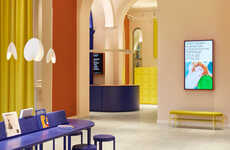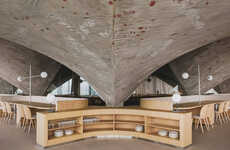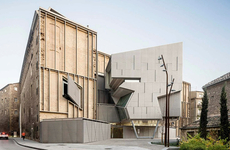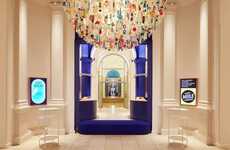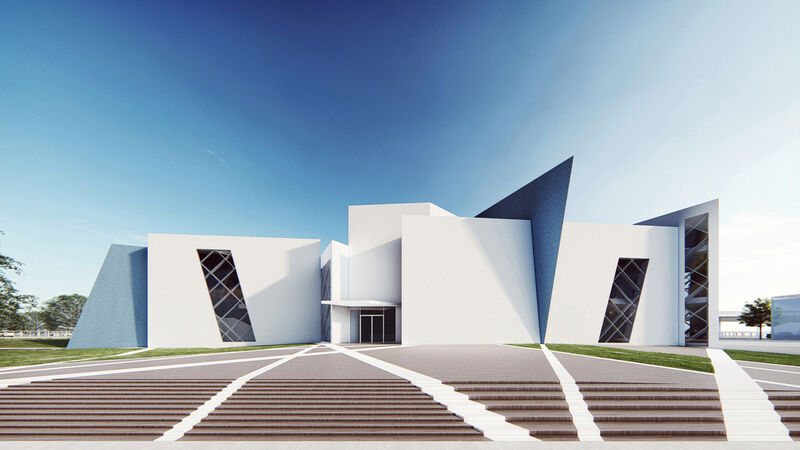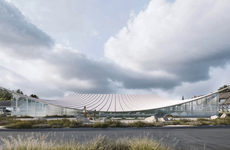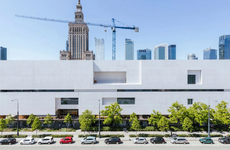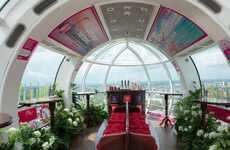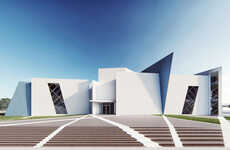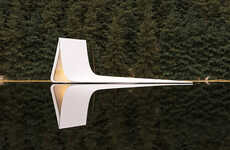
The Tikva Jewish Museum Will Get a Modern Geometric Makeover
Josh Thompson-Persaud — May 20, 2021 — Art & Design
The Tikva Jewish Museum in Lisbon, Portugal, will receive a modern redesign by NY-based Studio Libeskind that will feature a clean white-and-blue esthetic overtop angled geometric outlines.
The futuristic building will be made up of five separate interior segments that will be brought together by the slanting walls that will adorn its exterior. The Tikva Jewish Museum's redesign will make use of modern materials like white plaster and blue ceramics to achieve its futuristic look. Paying homage to the local architecture, both sides of the museum's walls will be finished in Azulejos, a kind of traditional ceramic tilework that hails from Portugal.
The Tikva Jewish Museum will host a number of exhibitions–some temporary and some permanent–as well as rooms dedicated to lecturing, researching, and learning. The roof will be set at variable heights, breaking up the building's silhouette and offering pop-up spaces for restaurants, solar panels, and green installations.
Image Credit: Dezeen
The futuristic building will be made up of five separate interior segments that will be brought together by the slanting walls that will adorn its exterior. The Tikva Jewish Museum's redesign will make use of modern materials like white plaster and blue ceramics to achieve its futuristic look. Paying homage to the local architecture, both sides of the museum's walls will be finished in Azulejos, a kind of traditional ceramic tilework that hails from Portugal.
The Tikva Jewish Museum will host a number of exhibitions–some temporary and some permanent–as well as rooms dedicated to lecturing, researching, and learning. The roof will be set at variable heights, breaking up the building's silhouette and offering pop-up spaces for restaurants, solar panels, and green installations.
Image Credit: Dezeen
Trend Themes
1. Geometric-themed Museums - The trend of creating futuristic museums that feature geometric designs offers opportunities for architects and designers to experiment with different materials and shapes.
2. Variable Height Architecture - Creating buildings with variable height rooftops disrupts the traditional silhouette of buildings and allows for spaces to be used creatively, such as for restaurants, solar panels, and green installations.
3. Incorporating Local Culture - Designs that incorporate elements of the local architecture and culture, like the use of traditional ceramic tilework in the Tikva Jewish Museum, provide an opportunity to create unique buildings that stand out in their surroundings.
Industry Implications
1. Architecture and Design - The trend towards futuristic geometric-themed museums and variable height architecture offer architects and designers new opportunities to experiment with different materials, shapes, and functional uses.
2. Museum and Exhibition Industry - The redesign of the Tikva Jewish Museum, with its separate interior segments for hosting exhibitions and rooms for lecturing, researching, and learning, is an example of how museums can innovate to create unique and dynamic spaces.
3. Tourism Industry - Futuristic, visually striking museum designs like the Tikva Jewish Museum can attract tourists to a destination, providing an opportunity for the local tourism industry to grow.
4.5
Score
Popularity
Activity
Freshness


